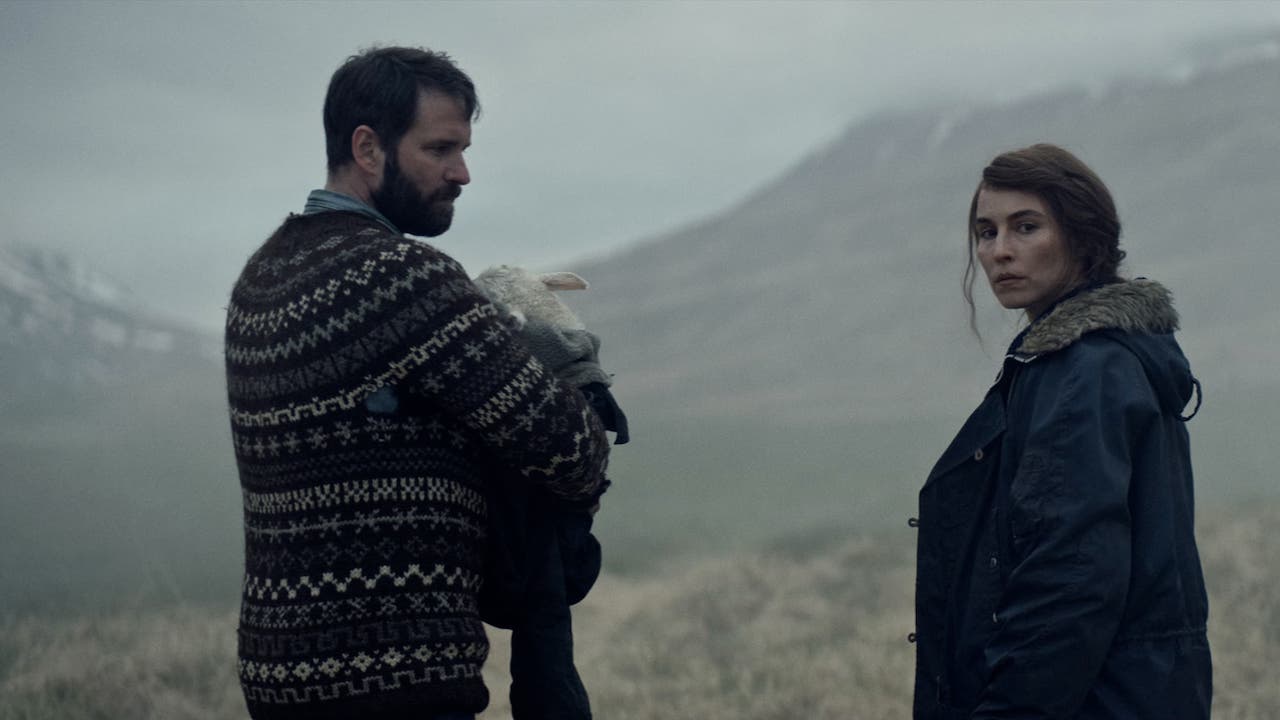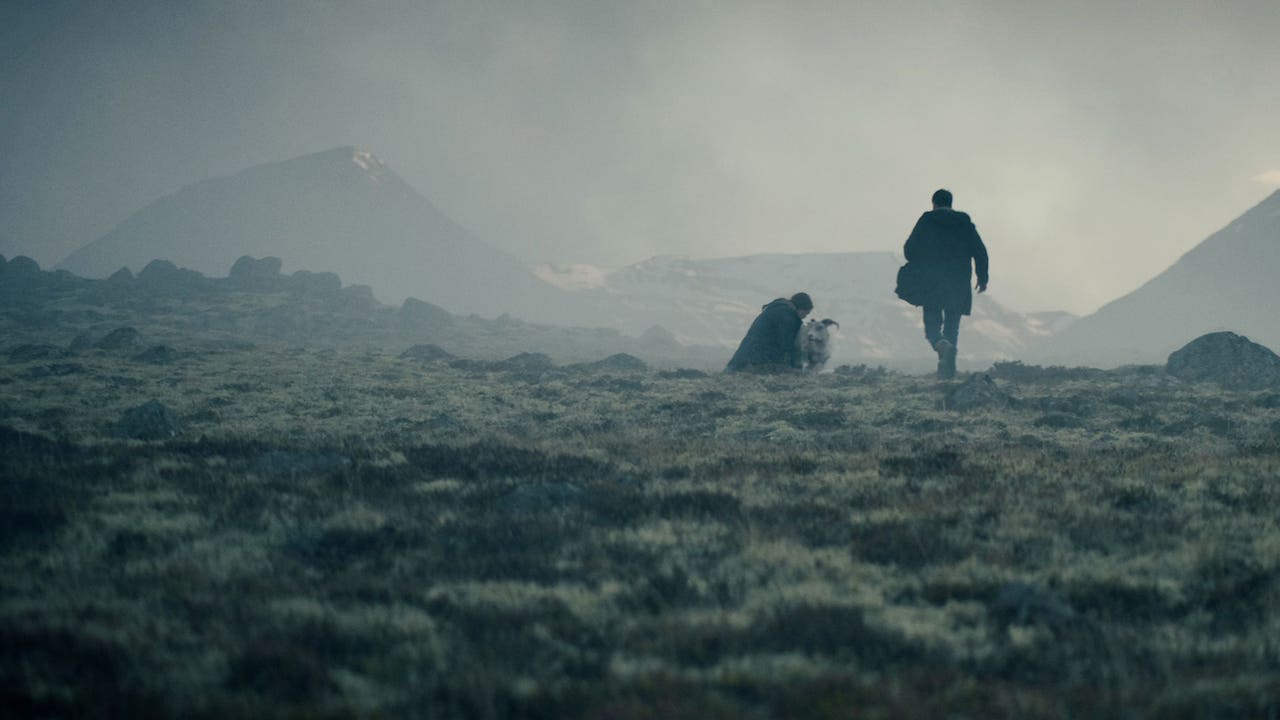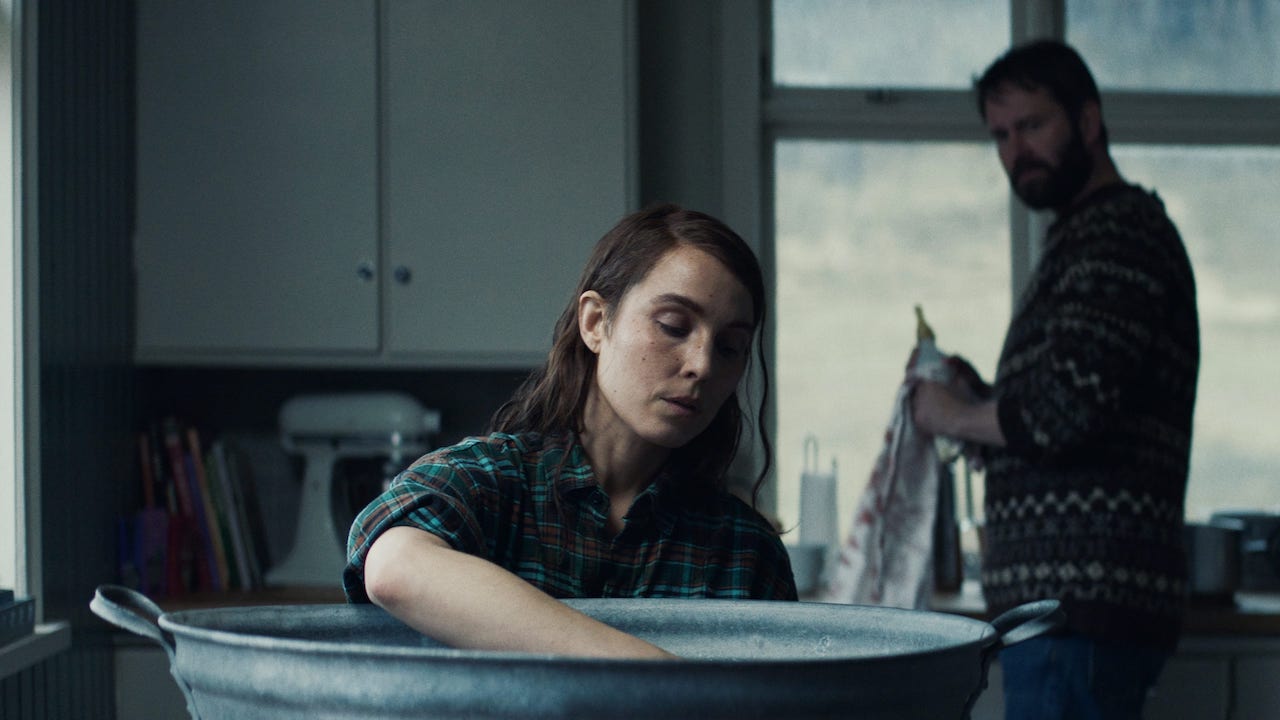A bleak A24 folk-horror fable, Lamb is too slow and sheepish to be scary

To Travis Johnson, this oblique A24 “tone poem” isn’t baaa-aad: rather, it’s an assembly of striking elements that don’t build into something greater.
Lamb (2021)
On a remote sheep farm in picturesque but rugged Iceland, childless couple Maria (Noomi Rapace) and Ingvar (Hilmir Snær Guðnason) have their workaday lives disrupted when one of their sheep gives birth to a human hybrid. Naming the unnerving creature Ada, they decide to bring it into their home and raise it as their own—a replacement for the child it is heavily implied that they lost some time in the past.
Ensconced in familial bliss, it takes the arrival of Petur (Björn Hlynur Haraldsson), Ingvar’s tearaway brother, to point out just how weird a lamb-headed toddler really is. Just what brought the creature forth? And what is the ominous presence in the nearby mountains that seems to be searching for it?
Lamb is being marketed as a horror movie and while it certainly borrows some tones from that genre, anyone expecting a conventional fright flick is going to come away confused. Even for an A24 joint, Lamb colours outside the commonly accepted genre lines, touching on notes of folk horror and luxuriating in the chilly, bleak atmosphere of its location. Its story wrings a lot of mileage out of the empty, unnerving presence of the flocks of sheep that drift in and out of the story, a mute Greek chorus to witness a story that unfolds at a gradual, near-glacial pace. That story is a meditation on loss, love, grief, and parenthood, told through long silences and carefully constructed tableaux.

All of this comes to us from first time director Valdimar Johannsson, a protégé of Hungarian arthouse legend Bela Tarr, who is an executive producer along with Rapace. Jóhannsson co-wrote the script with mononymic Icelandic writer Sjón, a frequent collaborator of Björk, which accounts for the film’s lyrical, often opaque tone and folkloric feel. Lamb is a film which operates by its own rules and trusts the audience to be able to grasp what they are with minimal handholding. Perhaps it trusts us too much; you may find yourself wondering where all this is going more than once.
Yet there is beauty to be found here, and mystery. Lamb’s refusal to explicitly define the supernatural elements in play means that they remain uncanny throughout, retaining their power to unsettle right through to the film’s closing moments. Rapace and Guðnason excel at communicating the interiority of their characters with minimal dialogue, letting wordless glances and quiet, shared moments say so much. The loneliness of the setting is palpable, the mood both oppressive and haunting, and cinematographer Eli Arenson gives us some genuinely striking and unsettling imagery.

But what does it all add up to? Not as much as it wants to, I’m afraid: Lamb is less than the sum of its parts. While it could be argued that the unsolved enigmas it presents are a feature rather than a bug, coming away from the film, it’s hard not to arrive at the conclusion that we haven’t been given all the pieces we need to at least get a sense of the whole picture. As a tone poem Lamb works a treat, but unless you’re willing to give yourself over completely, odds are good you’ll be more frustrated than entranced.




















